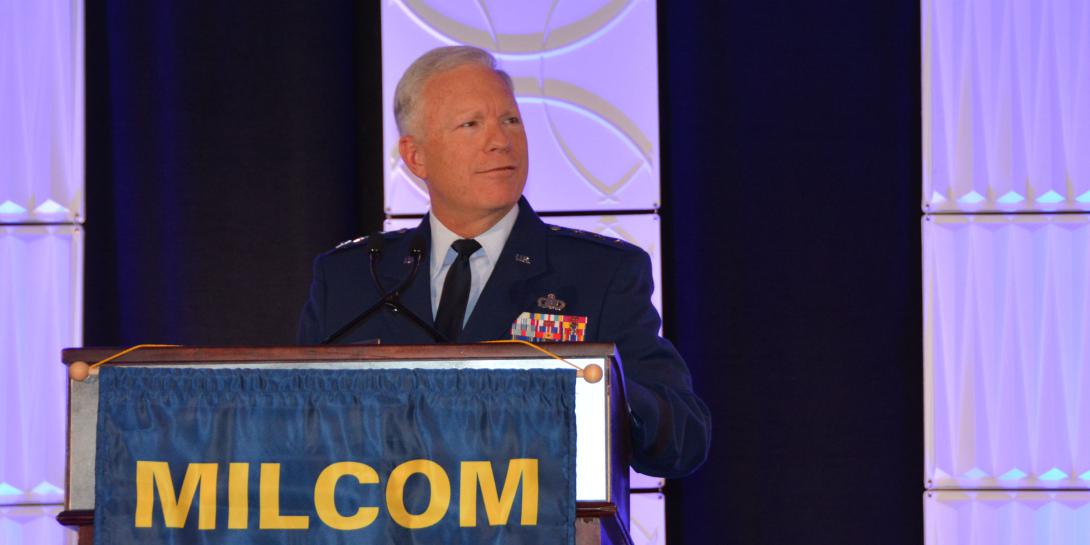Air Force Pursues SMC 2.0 Effort
The United States is facing a strategic inflection point in terms of how it will pursue satellite communications in an increasingly contested, degraded or operationally limited space environment. In response, the U.S. Air Force Space and Missile Systems Center developed an overarching effort, dubbed SMC 2.0, spearheading agile acquisition, reorganizing internally and harnessing innovation to keep the military and the country safe from adversarial attacks.
“The Space and Missile Systems Center must adapt in order to maintain our nation's superior space technical capabilities,” said Lt. Gen. John Thompson, USAF, commander, Space and Missile Systems Center (SMC), and commander, Air Force Space Command. “That is what SMC 2.0 is all about. As a center, we've got to be more innovative. We've got to work better as an enterprise, and we have to be able to shift our cultural mindset. And above all, we've got to move faster to keep our adversaries backpedaling.”
The commander explained the SMC 2.0 approach during his keynote address on October 29 to attendees at the MILCOM conference, a military communications forum hosted by AFCEA International and the Institute of Electrical and Electronics Engineers (IEEE) in Los Angeles through October 31.
Current military satellite communications (MILSATCOM) architectures restrict agility and resilience, Gen. Thompson admitted. The military uses separate types of satellite communications for different missions. “Each frequency band—protective, wideband or narrowband—has special characteristics that differentiate one from another and make one better suited for a particular service,” he explained.
Regardless of whether or not we have a Space Force, we are going to need people & technologies that support Space functions. At SMC, we have military and civilians with 30,000 work years of aqc. expertise, and the US Space Force is going to need experts, says LTG Thompson #MILCOM pic.twitter.com/VocXEJWhdF
— Kimberly Underwood (@Kunderwood_SGNL) October 29, 2018
SMC 2.0 aims to improve upon the existing system. “There are ways to look at the architecture in order to leverage satellite communications (SATCOM) and benefit from lower costs and schedules to find the right fit in the right threat environment,” Gen. Thompson stated. “We need to be able to fight and defend ourselves in space, and we do that by deploying an agile, resilient and secure C4 [command, control, communications and computers] space architecture.”
The SMC is going straight for improved enterprise, partnerships, innovation, culture and speed—or E.P.I.C Speed—for its military satellite communications. This means incorporating more modularity across the various host platforms, including the service’s enterprise ground system and protective technical anti-jam SATCOM known as PATS.
Gen. Thompson also emphasized the role of ground enterprises to promote future interoperability. “Not every satellite or satellite system, whether it's communications or not, needs to have its own independent ground system,” he noted. “We need to be able to do things more as an enterprise.”
As part of this effort, the SMC will focus on protecting and defending the U.S. national security space architecture against threats, which will include measures to improve space situational awareness.
The SMC will deliberately look for innovation and partnership opportunities. This will encompass fundamentally changing space acquisition strategies to harness alternative architecture approaches, large commercial-based constellations, hosted payloads, small satellites and rapid prototyping. “You name it; we're interested in all of that.”
To achieve the SMC 2.0 strategy, the center is shifting programs and personnel into a core acquisition structure, Thompson continued. “Under that new core structure, people will report to core program executive officers (PEOs)—and yes, I will remain the Air Force PEO for Space, but we've added three more PEOs to take out management layers and push decision makers closer to the workforce so that we can go faster and innovate.”
Some programs, such as the Enhanced Polar System (EPS) Recapitalization Effort, are already benefiting from the SMC 2.0 authorities, Thompson ventured. “It's taking advantage of our streamlining and rapid acquisition, and taking advantage of our international partnerships.”
Both the Protected Tactical SATCOM (PTS) and the Protected Tactical Enterprise Service (PTES) programs are relying on Section 804 rapid prototyping and fielding authorities provided by Congress. “And we're using other transaction authority contracting to do commercial SATCOM, Pathfinders, pilot efforts and PTS concept development.”
Moreover, the SMC has already awarded 13 space enterprise consortium other transaction agreements to prototype and experiment on cutting-edge space technologies, the commander added. He expects part of that effort to enable the SMC to field an agnostic satellite bus capability.
In addition, as part of the SMC 2.0 revamp, the SMC altered its beleaguered milestone decision processes, replacing it with regular in-process reviews. “Those of you who are familiar with the FAR [federal Acquisition Regulation], the Department of Defense acquisition process and milestone decisions, know how hard it is to get to those milestone decisions,” Gen. Thompson stated. “Now under Section 804 authorities, we don't have to do those.”
Instead, the SMC will take advantage of in process reviews with Will Roper, assistant secretary of the Air Force for acquisition, technology and logistics. As the Air Force’s service acquisition executive, Roper and Ellen Lord, the undersecretary of defense for acquisition, technology and logistics, can complete the in-process reviews, which will involve “much less bureaucracy,” and will be “much easier to accomplish” than a formal milestone review decision, Gen. Thompson noted.





Comments